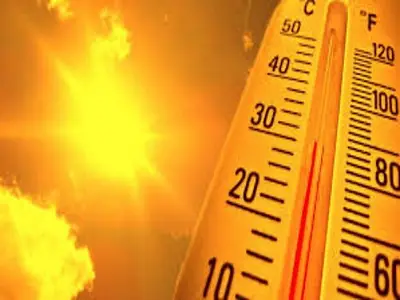The Barbados-based Caribbean Climate Outlook Forum (CariCOF) says for the next three months, the ENSO neutral conditions, also called La Nada, will result in recurrent excessive humid heat, culminating in heatwaves as the Caribbean heat season peaks in August and September.
ENSO conditions represent a state in the tropical Pacific Ocean where sea surface temperatures are neither significantly warmer than average (El Niño) nor cooler than average (La Niña).
In its latest Caribbean Climate Outlooks publication, CariCOF said for the next three months could also be rainfall intensity and shower frequency, peaking in September and October, resulting in high to extremely high potential for flooding, flash floods, cascading hazards and associated impacts.“However, Saharan dust episodes, combined with slackened winds, produce hot and humid spells with reduced air quality, all the while stifling intense shower and tropical cyclone activity,” CariCOF said, adding that the Guianas are entering their long dry season, steadily increasing wildfire potential but decreasing flood potential there.
CariCOF said that as of July 1 this year, severe or worse short-term drought has developed in southwest Belize, the Northwestern Bahamas, and southern part of Central Cuba, while long-term drought is occurring in southwest Belize, the Northwestern Bahamas, Central Cuba, the northern Dominican Republic, and south-central parts of Jamaica.In its climate out look for the period November 2025 to January 2026, CariCOF said that spells of hazardous, humid heat should ramp up toward September in the ABC Islands (Aruba, Bonaire and Curacao), Barbados, the Windward Islands and the Guianas.
However, the intensity of the peak of the 2025 heat season is not forecast to match that of 2023 and 2024.
It said that this period also marks the transition out of Caribbean Wet Season, the Atlantic hurricane season and the heat season and into the cooler, early dry season in December and January.
“The tropical North Atlantic Ocean is forecast to remain slightly warmer than average in and around the north of the Caribbean region and the Guianas. Unusually high air temperatures will most likely prevail with significant heat stress to ease in October and mild temperatures returning in December.
“The risk of severe weather impacts, including flooding, flash floods, and cascading impacts is expected to be higher than usual, while rainfall totals might be even higher than usual. Hurricane season activity may be unusually high, particularly in areas north and west of unusually warm waters,” CariCOF added.










